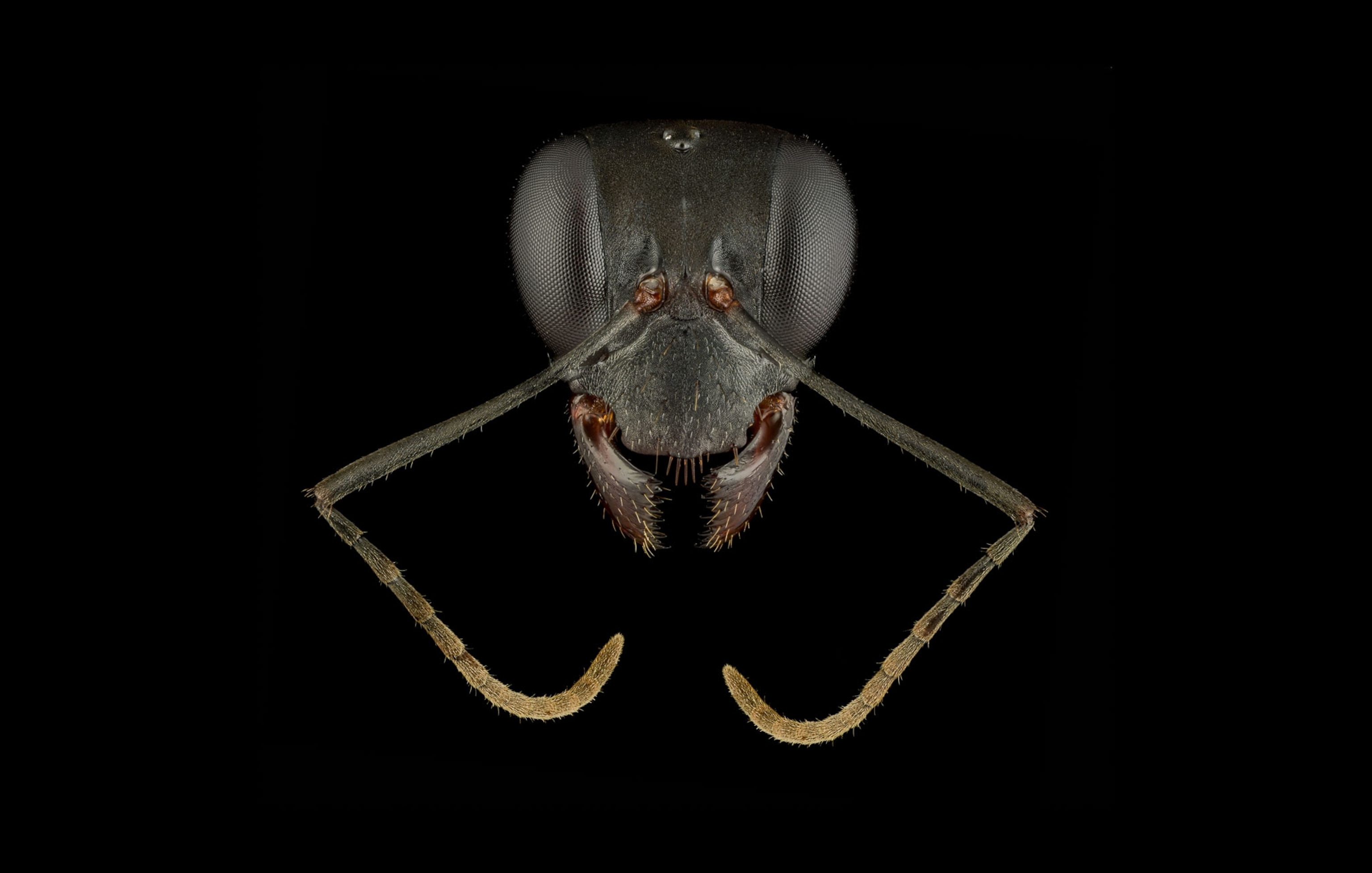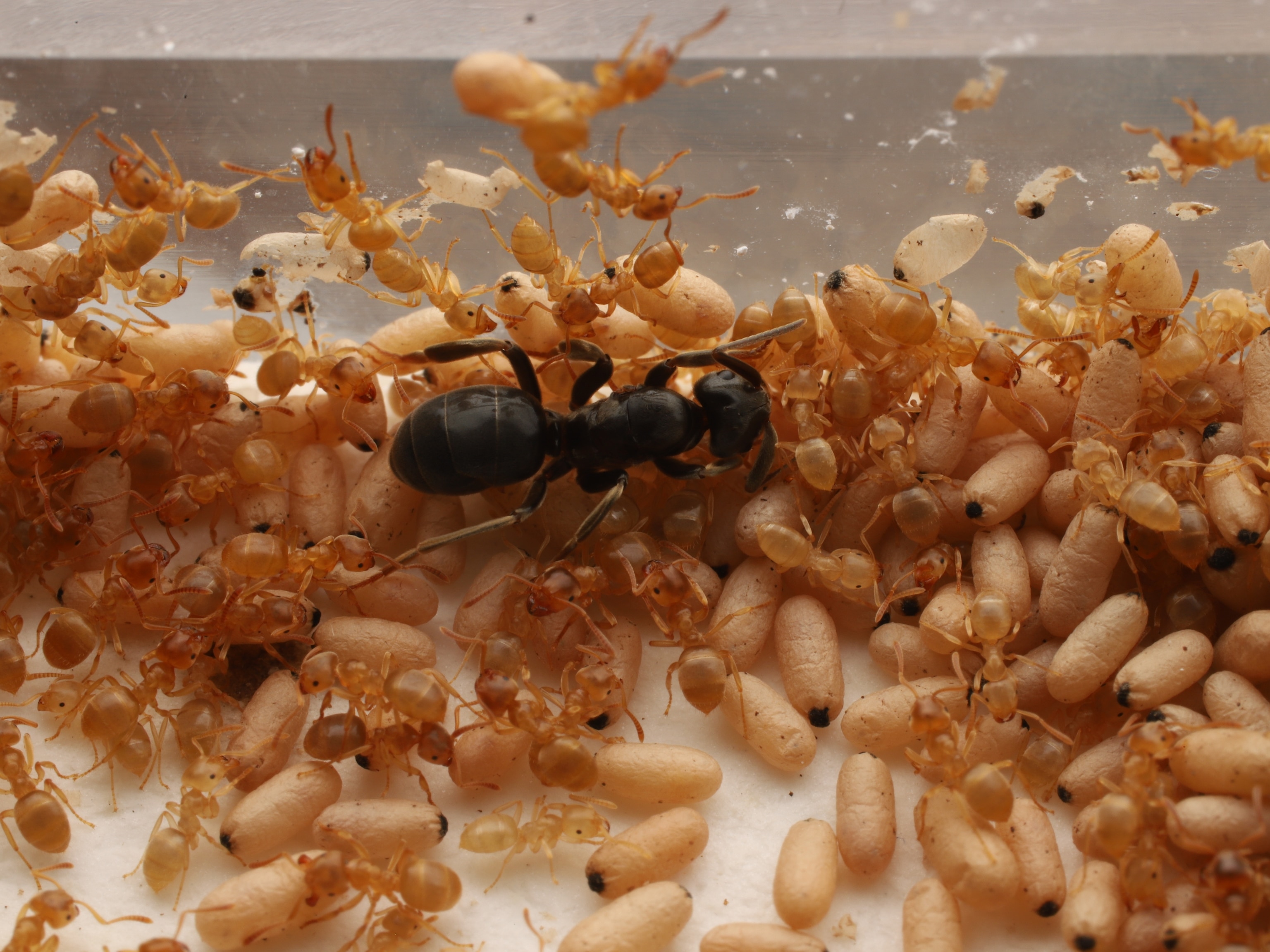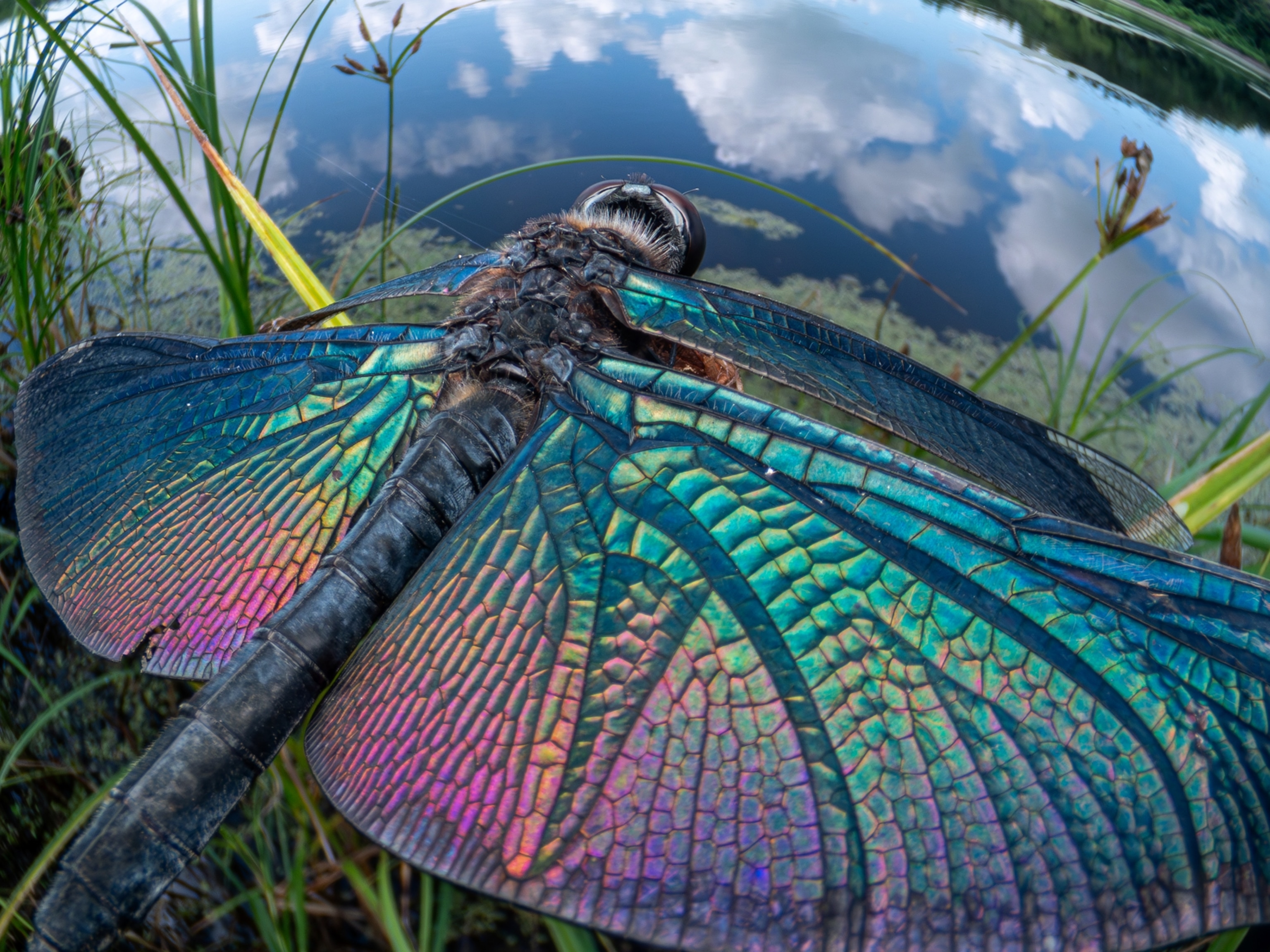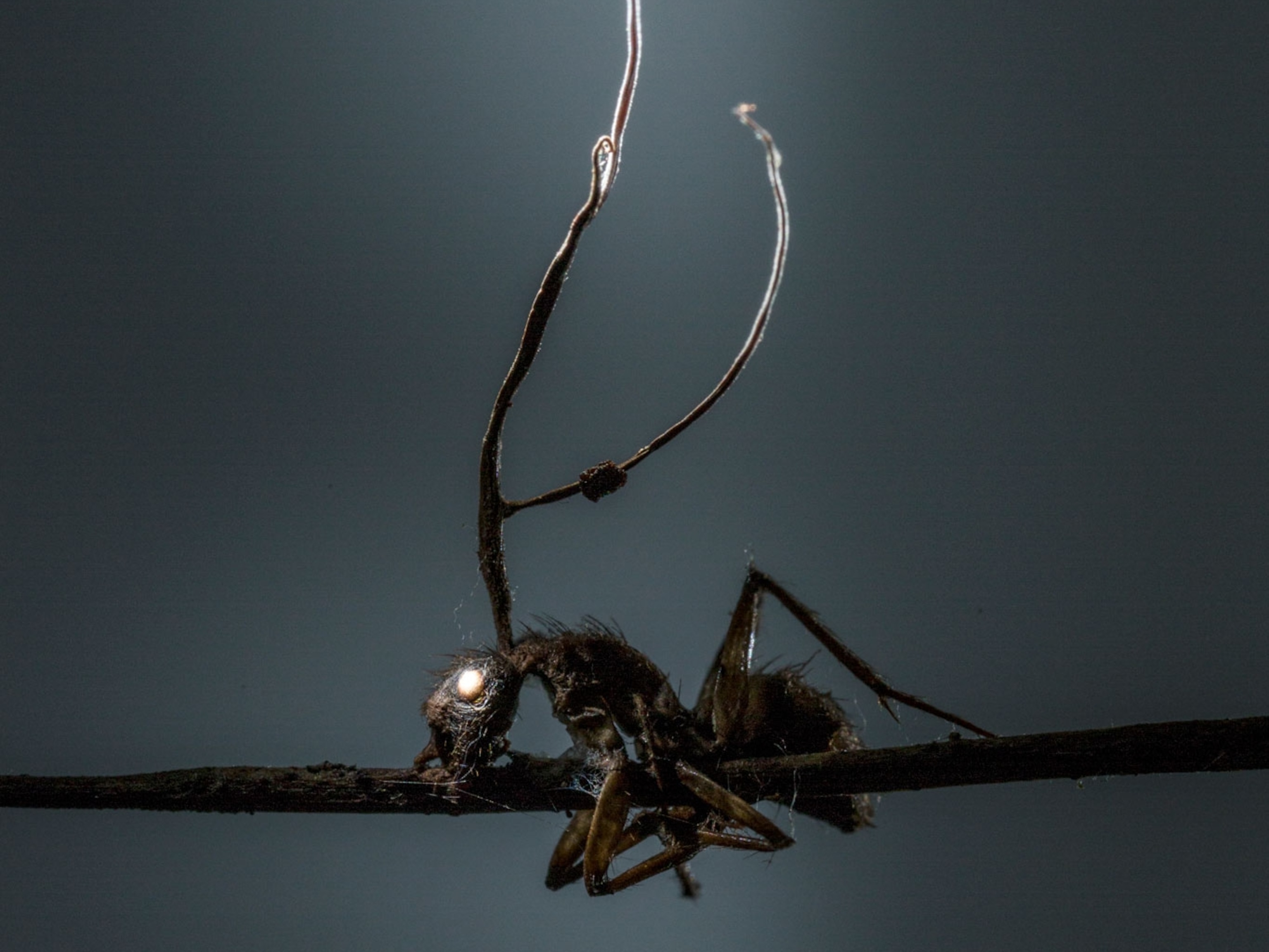The Saharan silver ant can scurry across the hot sands of northern Africa at blistering speeds, surpassing three feet in a second. Relative to body size, that would be like a human dashing more than two football fields in the time it takes you to say, “That’s fast.”
The giant turtle ant, Cephalotes atratus, is sometimes called “the Darth Vader of the ant world.” With a large, flattened head and sleek body, it can glide between the treetops of South American forests. And then there’s the leaf-cutter ant: some of them have an exoskeleton coated in rock and farm fungus underground with bits of chewed up plants, developing agriculture millions of years before humans even existed.
Eduard Florin Niga recently photographed these and many more species for his new book Ants: Workers of the World, to be published May 18. Niga’s goal for the book, and his work in general, is to show everybody the fascinating microscopic universe that exists around us—but which is normally impossible to see, he says.
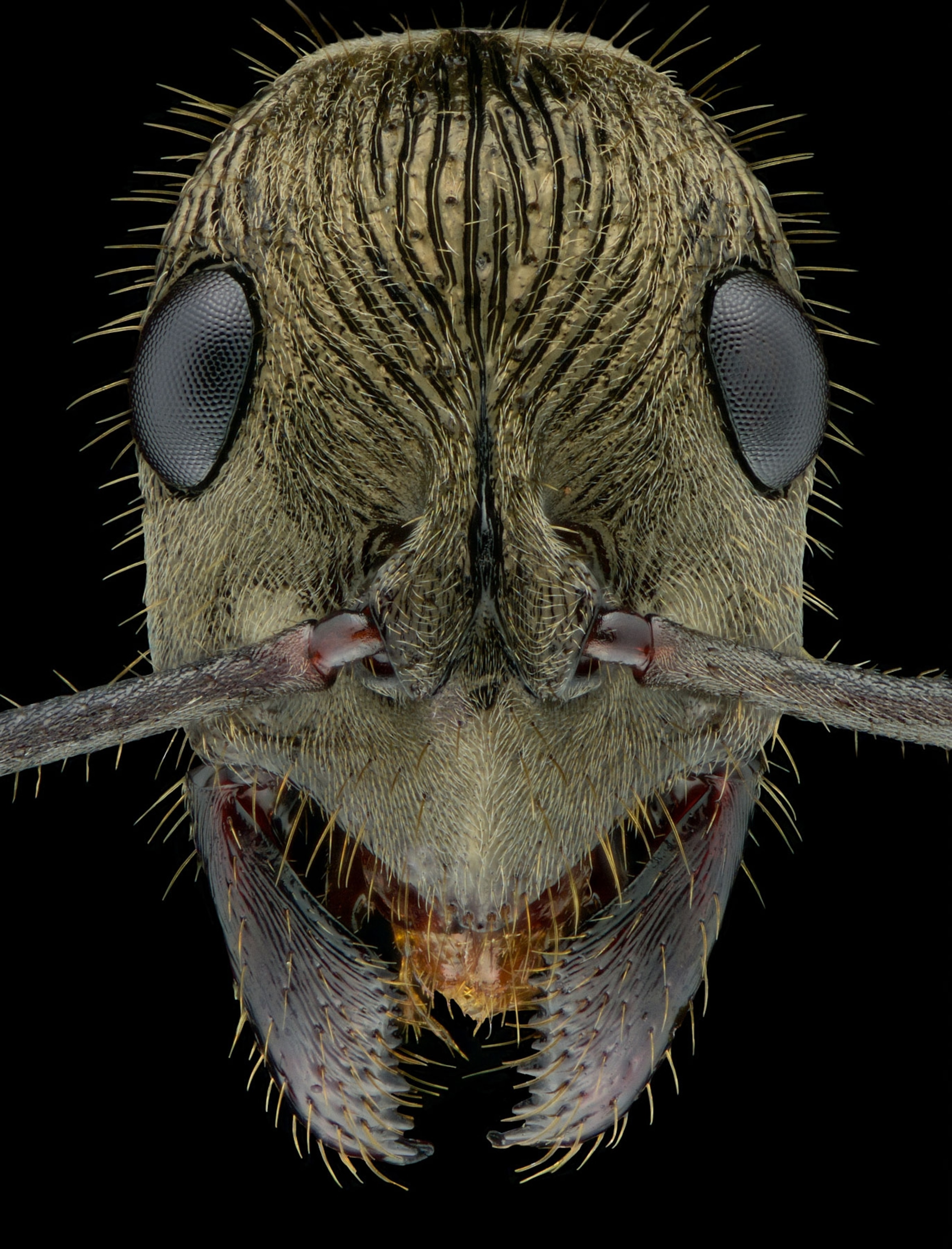

“What attracted me first was to see this microworld come to life in front of me,” the photographer says. And by watching for a while, he learned “how phenomenal their societies are—so much more sophisticated and interesting than ours.”
These ant “headshots” have proved illuminating even to some entomologists, who are seeing their study subjects in unprecedented detail.
“Eduard's pictures actually opened a door to a completely new world for me,” says Roger Strotmann, an independent ant researcher in Germany and a collaborator of Niga’s. “There are so many morphological details I would never have discovered without his work.”
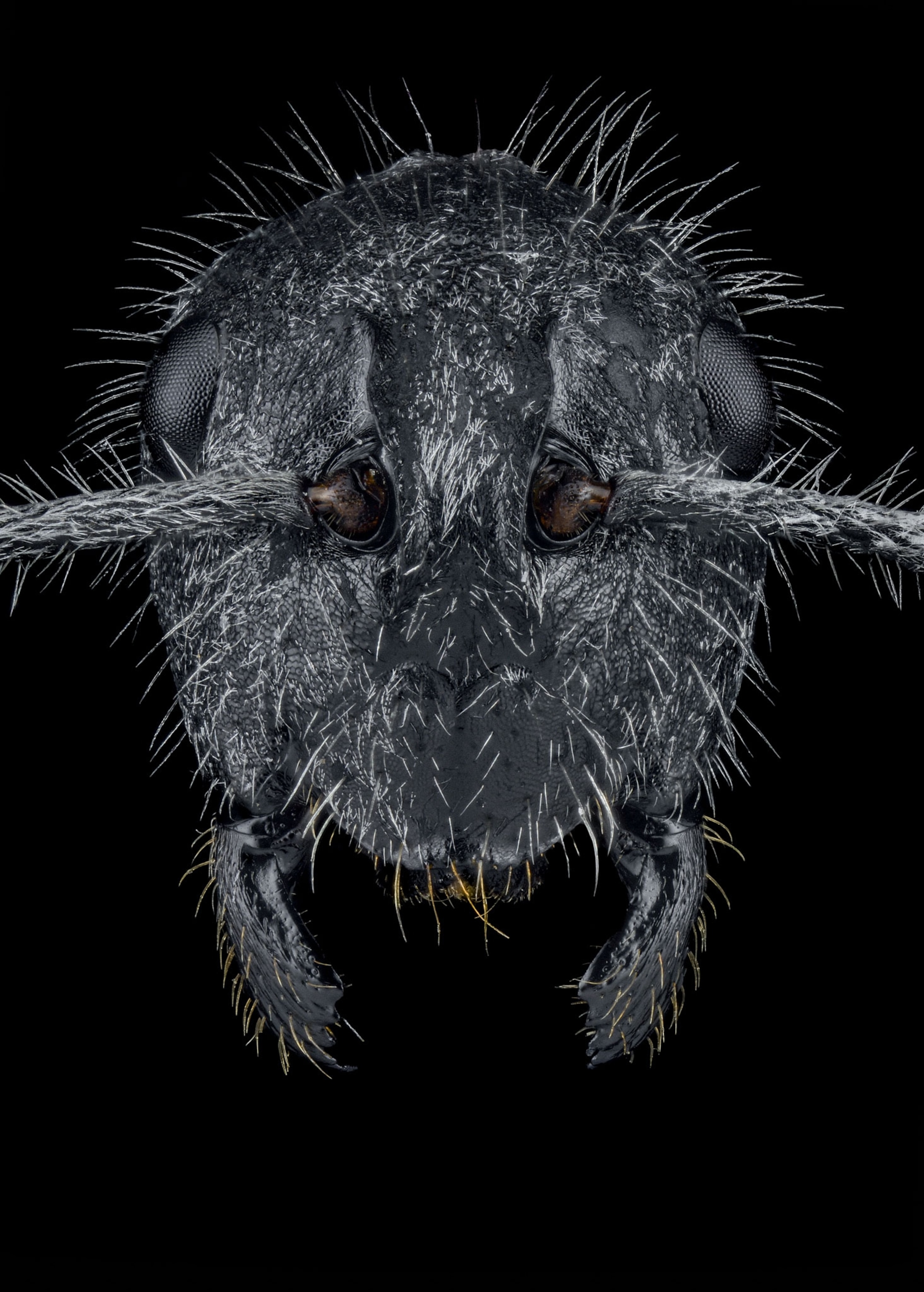


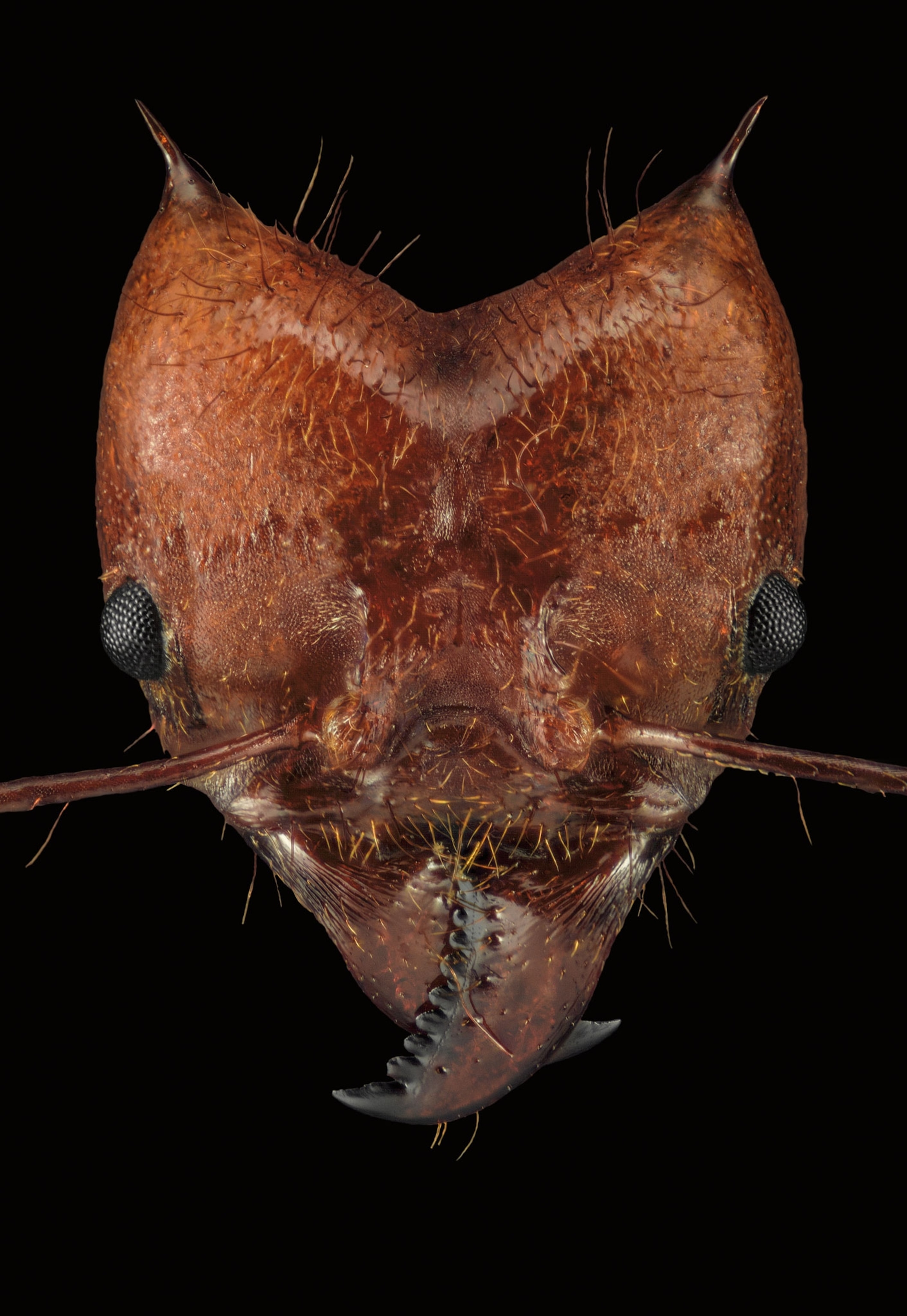
Where are the eyes?
Although Niga was interested in insects as a child growing up in rural Romania, it wasn’t until a few years ago that his interest was rekindled. That’s when his daughter saw an ant in a London park and asked: “Where are its eyes?”
Niga didn’t have a good answer. So he dusted off the photography skills he learned during a few years as a Romanian policeman, documenting crime scenes. (He’s now based in London, where he teaches English and math.)
Now Niga can confidently answer his daughter: Here are its eyes. And here, and here. Some, like army ants, are virtually blind, finding their way about the world using scent and touch. But others, like Gigantiops destructor, have huge eyes, covering much of their heads, which probably helps these jumping ants leap about the Amazon rainforest en route to feeding on nectar and small arthropods. Meanwhile, Saharan silver ants have three eyes in the center of their forehead for detecting light.


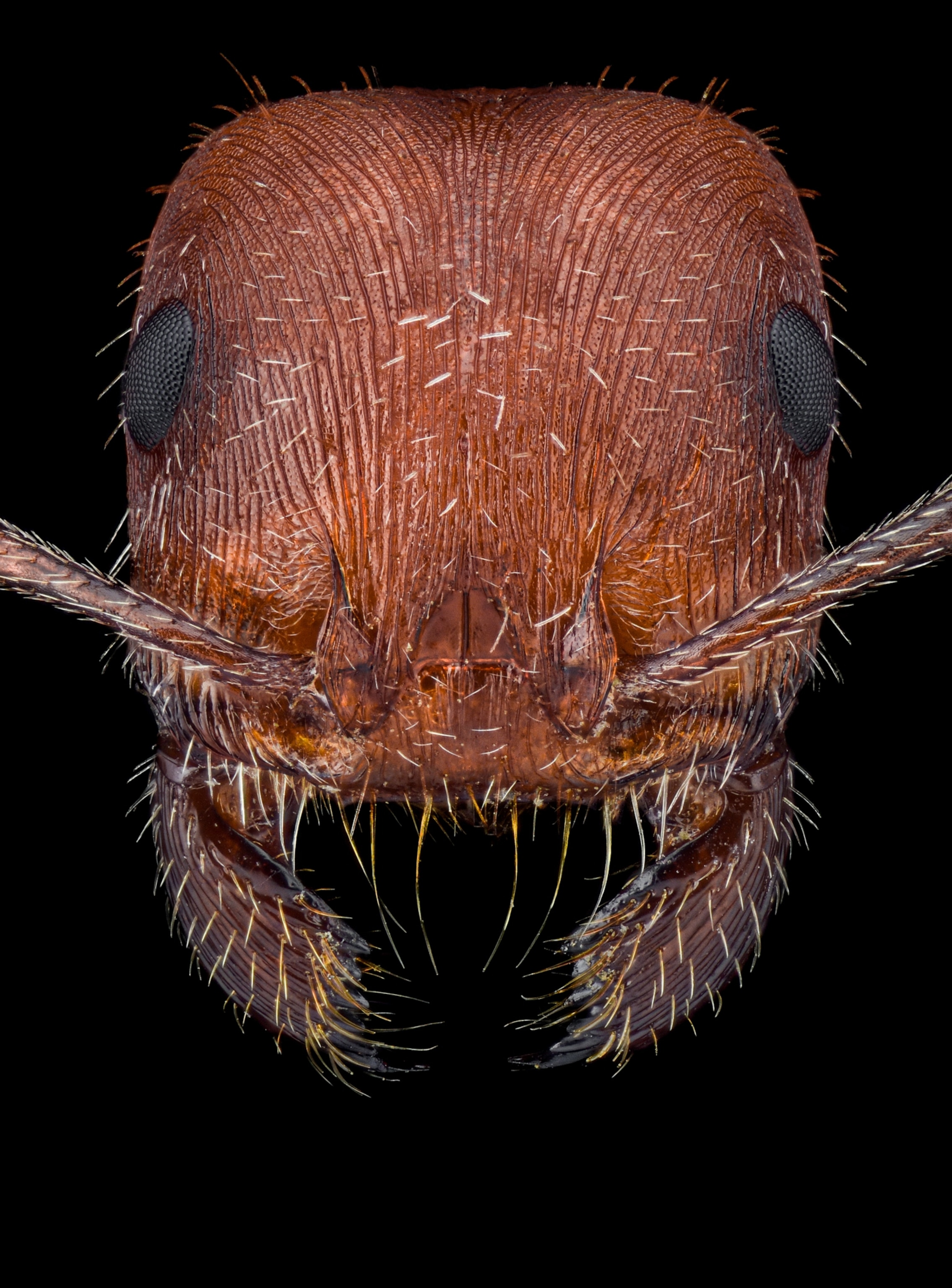
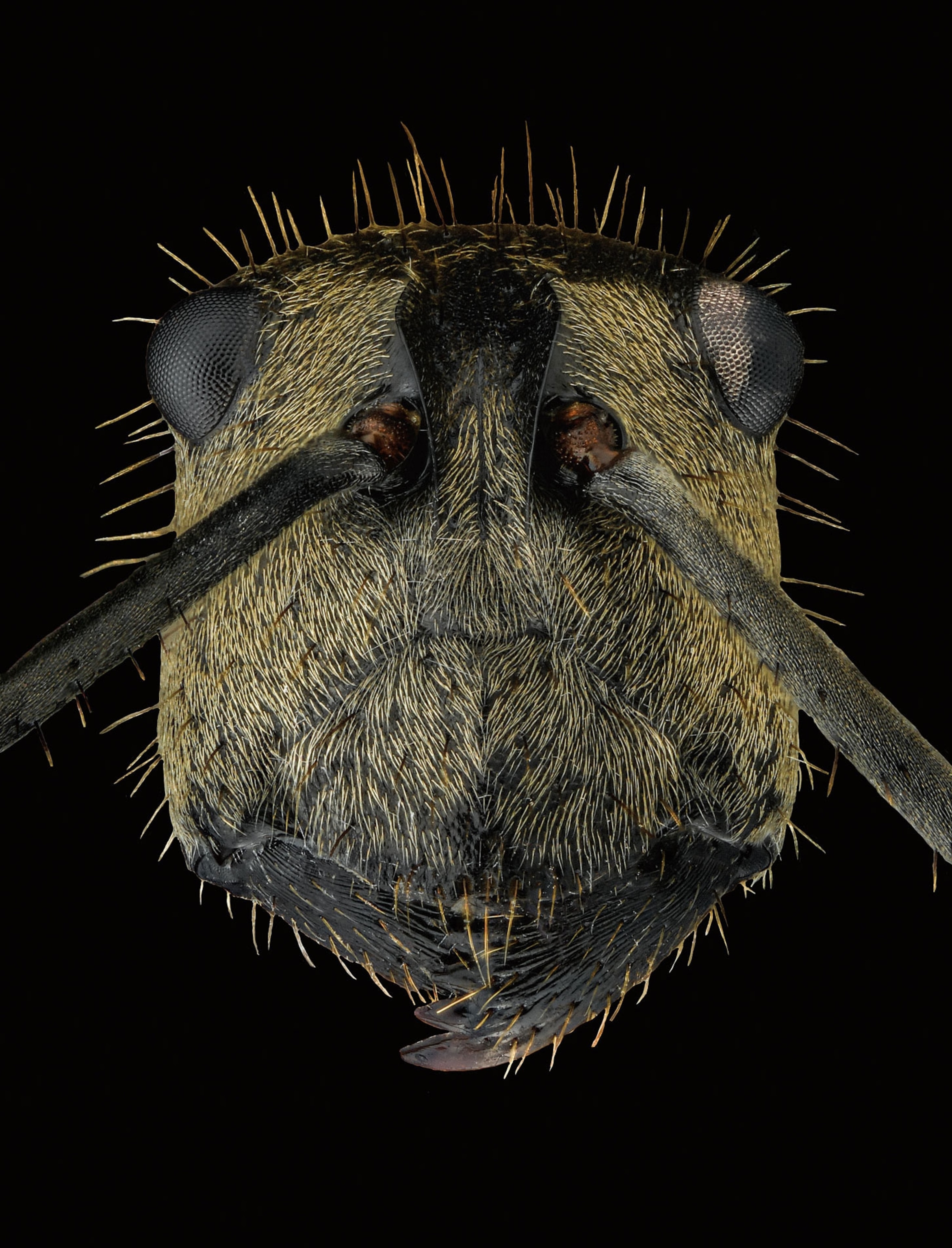
Getting the shot
To create the extreme closeups, Niga constructed a rig in his London home that takes snapshots of an ant’s head by region. To fashion the image of one head sometimes requires taking more than a thousand photos, using magnifications up to 20 times. The ants are usually dead when photographed, though Niga sometimes rehydrates dried specimens before the photo shoot to make them look more like they did while they were alive. He gets his specimens from dozens of collaborators around the world, usually through the mail.
After taking all the pictures, Niga stitches them together using editing software. The result is often astonishing, he says: for example, he thought Polyrhachis ants weren’t very showy until his high-magnification image showed they were covered with shimmery golden hairs.
Eleanor Spicer Rice, an independent ant researcher who wrote the text for Niga’s book, was surprised to see that many ants are iridescent, with shiny, metallic exoskeletons. Scientists think this coloration may make ants resemble a dew-covered twig, which helps avoid detection by predators.
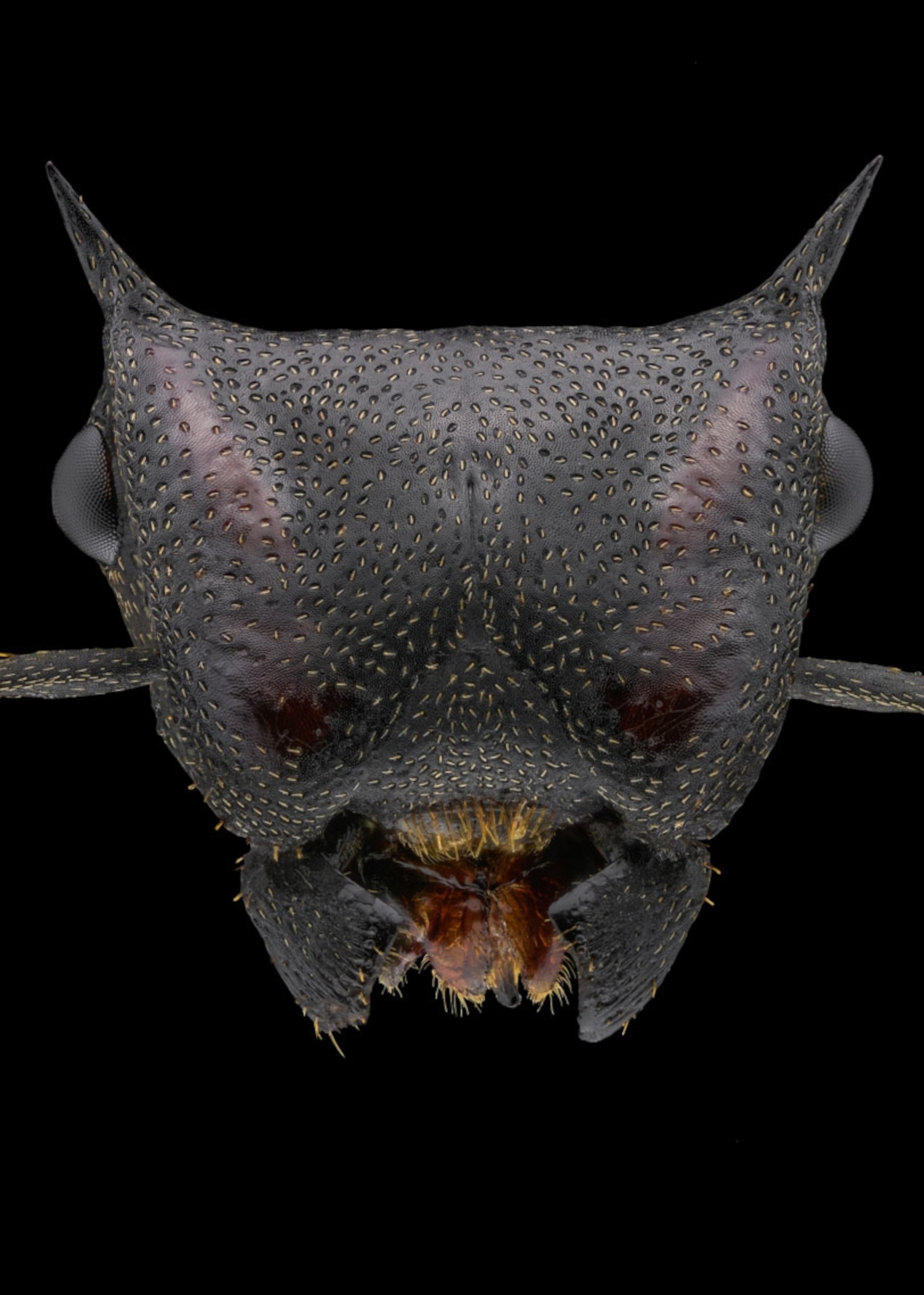
Working on the book allowed Spicer Rice to remember what ignited her lifelong love of ants: “There are so many different kinds ... and they’re so strange and beautiful, and they are all around us.”
And you don’t have to go too far to appreciate them, says Spicer Rice, who lives in Raleigh, N.C. There are at least 15,000 species of ants worldwide, and there’s a good chance there are cool species in your own backyard—or under the sidewalk.
Throughout the U.S. East Coast, for example, lives a species called slave-making ants because they steal pupae from other species and raise them as their own. This way, they get free laborers without expending the energy to raise them, Spicer Rice says. Then there are pavement ants. They live within and beneath concrete in urban areas worldwide, and wage spectacular wars in the springtime.
“People usually just think of the species that bother them,” Spicer Rice says. “But the world has so many, and they’re all doing amazing things.”
